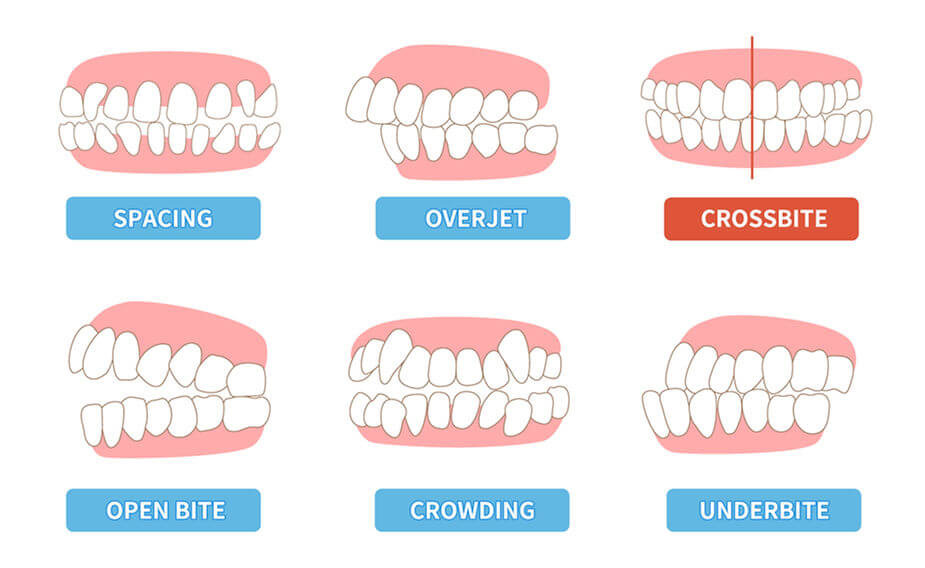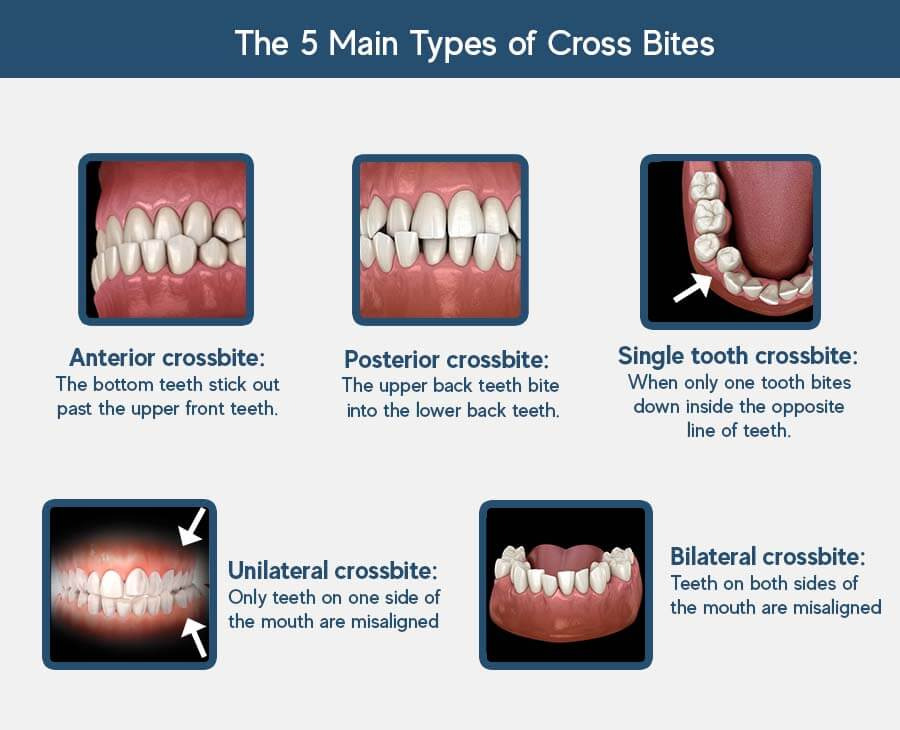In this article, we are going to address cross-bite solutions for oral health and functionality. A person’s smile is frequently regarded as one of their most alluring traits. It has the capacity to exude love, joy, and assurance. However, a person’s smile’s beauty and functionality can be impacted by a variety of dental problems. Cross-bite is one such issue that can result in discomfort and possible dental health issues. In order to shed light on this widespread dental issue, we will examine the definition, signs, and possible treatments for cross-bite.
Table of Contents
I. Knowledge of Cross-Bite

When the upper and lower jaws are not properly aligned when biting down, it is referred to as a cross-bite. A cross-bite causes the upper teeth to fall behind the lower teeth or vice versa, as opposed to a normal bite when the upper teeth slightly overlap the lower teeth. It can affect one or more parts of the mouth and both the front and back teeth.
II. Cross-Bite Types

Cross-bite mostly comes in three varieties:
- When biting down, the upper front teeth in an anterior cross-bite position rest behind the lower front teeth. It can affect one or more of the upper front teeth and is frequently accompanied by skeletal irregularities or an upper jaw misalignment.
- Posterior Cross-Bite: This type affects the back teeth, where the higher molars instead of the typical overbite fit inside the lower molars. It may be brought on by skeletal or dental abnormalities and can affect one or both sides of the mouth.
- Anterior and posterior cross-bites that affect both the front and rear teeth are referred to as mixed cross-bite. To fix misalignment, this type requires complete treatment.
III. Cross-Bite Symptoms

In order to take action quickly, it is essential to recognize the signs of cross-bite. Some typical warning signs and symptoms are:
- Dental Pain: Cross-bite can cause dental sensitivity, chewing pain, and joint pain in the jaw.
- Cross-bite can occasionally lead to facial asymmetry, giving the face an unbalanced aspect.
- Speech Difficulties: Because of the way their teeth are positioned, people who have a cross-bite may have trouble pronouncing certain sounds.
- Dental Wear and Damage: Improper dental alignment can cause chipping, tooth wear, and a higher risk of tooth decay.
- Cross-bite can put strain on the jaw joints and increase the risk of TMJ disorders, which can cause jaw pain, clicking, or restricted jaw movement.
IV. Cross-Bite Solutions / Treatment Options

Thankfully, there are several dental procedures that can effectively correct or do cross-bite solutions. The intensity and nature of the cross-bite, as well as the patient’s age, all influence the therapy option. Here are a few treatments that are frequently chosen:
- Orthodontic Treatment: The first line of defense for addressing or cross-bite solutions is frequently braces or invisible aligners. Orthodontic devices gradually realign the teeth so that they are in the proper locations.
- A palatal expander may be advised in situations when a narrow upper jaw leads to the cross-bite. By gently applying pressure, this device opens the upper jaw, providing more room for healthy teeth alignment and cross-bite solutions.
- Extraction of teeth: In some cases, tooth extraction may be required to make enough room for realignment. This method is normally saved for cases of severe cross-bite solutions.
- Jaw surgery may be necessary if a major skeletal imbalance is the root cause of the cross-bite. To ensure a perfect bite alignment, the upper and lower jaws are repositioned during this procedure for cross-bite solutions.
- Retainers: Patients are frequently encouraged to wear retainers after the active treatment period is over in order to maintain the corrected bite. The teeth are kept from slipping back into their original locations by retainers.
V. Early detection and intervention
In order to manage or cross-bite solutions, prevention, and early intervention are crucial. The oral development of children should be monitored by parents, who should have dental exams completed as soon as any abnormalities are identified. Early intervention can lessen the need for future, more invasive therapies and stop the problem from getting worse.
Are you looking for the best orthodontic care?
To receive orthodontic treatment of the highest caliber, choosing the appropriate orthodontist is essential. You may be sure that Dr. Azita Abbasi and her committed staff will take excellent care of you and personalize their treatment to meet your specific needs. You’ll find a wide variety of orthodontic treatments provided by Dr. Azita Abbasi at Top Nova Orthodontics, including traditional braces, transparent braces, Invisalign, TADs, and more.
Explore the fascinating innovations and amazing technologies of Top Nova Orthodontics to stay up to date with the most recent therapies and tools accessible for challenging cases. By consistently making investments in continued education and training, Dr. Abbasi stays at the forefront of the most recent developments and discoveries.
Conclusion

Cross-bite can significantly impact the aesthetics and functionality of an individual’s smile. However, with the right treatment approach, it can be effectively managed and corrected. Recognizing the symptoms early on and seeking professional help from a dentist or orthodontist is crucial in addressing cross-bite promptly. By understanding the definition, symptoms, and treatment options discussed in this blog, individuals can take proactive steps towards achieving a healthy and harmonious bite, leading to a confident and beautiful smile and get cross-bite solutions.


